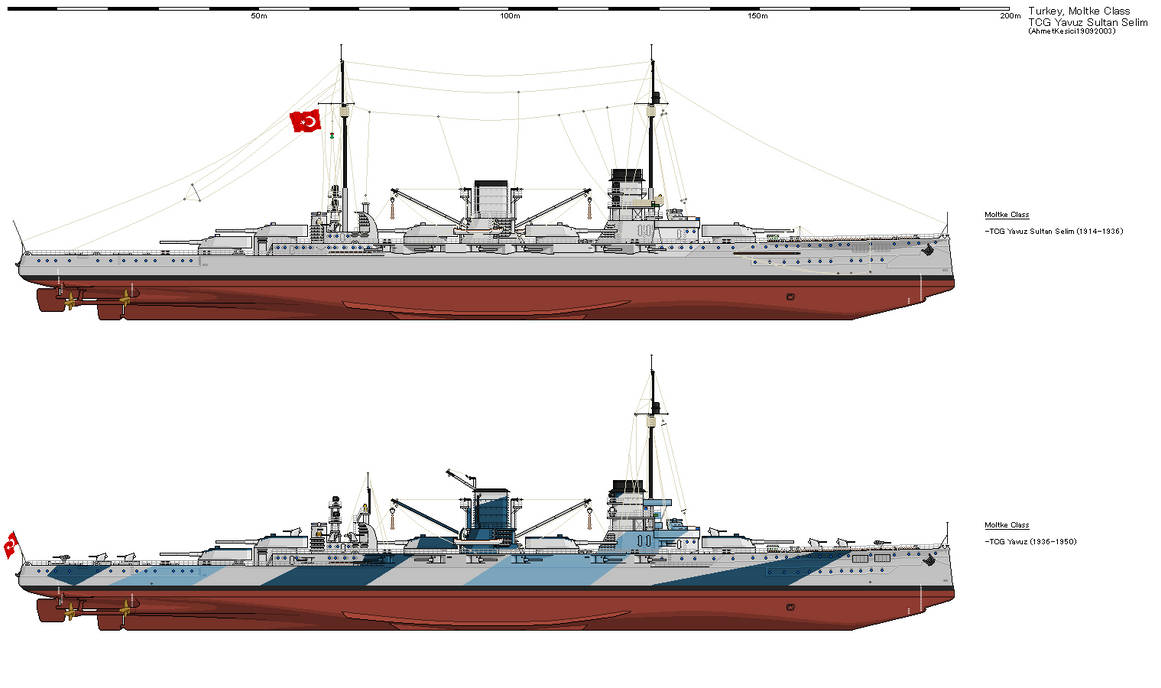The Russians had built the Nikolayev in response to the British disinformation that the Invincible class battlecruisers would be armed with 9.2" weapons. The Nikolayev with its eight 10" guns would have been superior to Invincible. That one bit of false information gained the Royal Navy a priceless three to four year advantage in building battlecruisers. The two Russian ships completed in February and August of 1913, while at the same time the next generation of Royal Navy battlecruisers, the Lion Class. were being completed at the same time. The 8x13.5" armament of the Lion class again was superior to the opposition classes.
The 12" 52 calibre weapon system the Russians fitted to their battleships and battlecruisers was acknowledged as the best of the 12" guns put into service and only surpassed by the Alaska's 12", 30 years later. The Russians did not feel outmatched too much by the Royal Navy Lion Classes 13.5" as that gun fired a 1200lb shell while their own 12" fired a 1038lb shell. German/Turkish reports of the actions between the Goeben/Yavuz and Russian battleships, in the Black Sea in 1916, reported that the Russians "could run and shoot". High praise from the German ship commanders. The St Petersburg type introduce the first above water torpedo mounting to modern capital ships, while the 6" secondary battery was far better than the RN 4" batteries on their early battlecruisers. The big, heavy, tripod masts fitted were an easy recognition feature of the ships.
The St Petersburg served in the Baltic and the Sevastopol in the Black Sea. The St Petersburg had very little to do in WW1 and struck its flag to the Communists in the 1917 Revolution. When the dust settled from the Revolution and the Soviets finally got around to surveying the ships it had acquired, they found that all though the ship was filthy (all of the officers cabins had been used for dumping excrement in) the ship was worth spending the time to bring it up to full fitness again. When one of the Gangut class was transferred to the Black Sea to replace the ships that had defected with General Wrangel the St Petersburg went with it. The main reason being that the Turks still had the Yavuz and the St Petersburg was far and away a better ship.
The Sevastopol was in the Black Sea and went with General Wrangel to Venezuela (I will have to follow the career of that ship in a new Venezuelan page).
